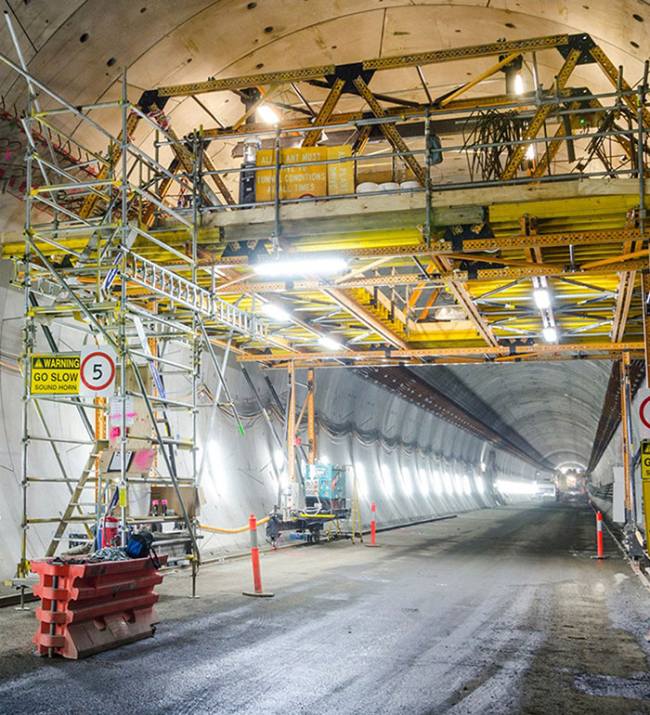
Continuous handover is the future of commissioning
How continuous handover can smooth the process of completions and commissioning.
What if your new car has already done 5,000 km?
Remember when you bought your last new car? The moment of delivery is always an exciting one and that’s because there’s a sense of everything being new, complete and in its place. And it smells great of course! The car is ready for whatever adventures you’re about to have with it. You’ve got nothing to worry about until its first service is due at 10,000 km.
Maybe you’re looking forward to buying a new one soon? Now imagine taking delivery of your new car and unknown to you, the car has already done 5,000 km. You’d be pretty annoyed, right? You’d be thinking that the oil is good for 10,000 km, and the impact on the wear of the car of missing a service could be considerable.
Infrastructure projects are often up and running before they get handed over
This sounds inconceivable with a new car, but it’s what happens on big infrastructure projects all the time.
The handover process can be held up for months because of missing paperwork and contractual delays meaning that the plant and its machinery could have been running for months or even years before it is properly handed over to Operations.
During this time maintenance information is building up day by day and this information may not appear in the Operations system if you do a traditional handover.
Parts could have been replaced with all kinds of associated warranty implications, breakdowns could have been remedied in ways that needed to be documented to prevent wasted time in the future, approaches to maintaining bespoke equipment configurations could have been learned and bedded in. Even if there has been no maintenance, equipment may have registered a number of working hours and that needs to be tracked.
All this knowledge and insight needs to be part of the formal handover process. But, because of the way that traditional handovers are managed, lots of this valuable information could be lost. This only leads to inefficiencies and additional cost further down the line.
The chasm between commissioning and operations
Traditionally, there is a rush from everyone involved in construction and commissioning to get to the point where the job is considered complete. Everything may be built and it might look finished, but the job is not actually complete because of the complexities of handing it over.
Each participant in a project works towards delivering to the scope defined in their contract. The ideal environment is one where the handover happens seamlessly and both parties are fully aware of how the contract was delivered. Unfortunately, this doesn’t always happen.
There’s a gap, and the gap is that commissioning is finished, but operations haven’t been brought up to speed yet.
This can often be seen in situations where the requirement of completing a project according to the contract does not dovetail neatly into what operations needs for handover. There is pain for all the parties on either side of this gap. For operators, it means that the facility is incapable of operating to its potential for some time. Contractors, on the other hand, also lose out by not being paid promptly.
Continuous handover is the solution
Continuous handover is the correct way of managing the handover from Construction and Commissioning to Operations and Maintenance.
Completions Connect offers a staging area where data pertinent to operations can be entered continually – as it is created – during the entire construction and commissioning process.
Inputs include;
- Asset hierarchy
- Engineering Data
- Vendor Manuals
- Maintenance History
This data is then mapped directly into the client’s Operational Maintenance System (Maintenance Management/Build Optimisation).
The outputs include;
- Operational Manuals
- Operational Procedures
- Preventative Maintenance
- Plan
- Task Lists
- Equipment Detail
- Work Orders
- Schedule etc.
The Completions Connect staging area completely re-thinks traditional handover process to the extent that ‘go-live’ becomes a non-event. By starting early on in the commissioning process all of the data required for handover is naturally collected. Where BIM has been part of the project life-cycle, the continuous handover process is even simpler.
For example, the MDR (Master Document Register) often takes huge amounts of effort to create. Completions Connect creates this automatically from the data in the staging area.
All of this ensures a smooth handover and the best possible startup for the project. Everyone is happy!
Continuous handover benefits everyone
Contractors on a project build often have a with-holding payment that is only released once all documentation has been handed over. At 20% of total funding, this can represent a significant portion of the profit on the job.
Operations will be much more comfortable receiving a plant if they have been involved in a continuous hand-over process.
They will be aware of how well it has been built, and also aware of the maintenance and running history at handover meaning they’ll be familiar with how to maintain it moving forward. Preventative Maintenance procedures will have been developed well ahead of them being implemented. They will have ordered the correct inventory stock, pulled together the maintenance packs and prepared the staff involved for the maintenance task ahead.
All the above means they will be much more prepared to sign off on the completed plant without delay which will release contractor payments.
